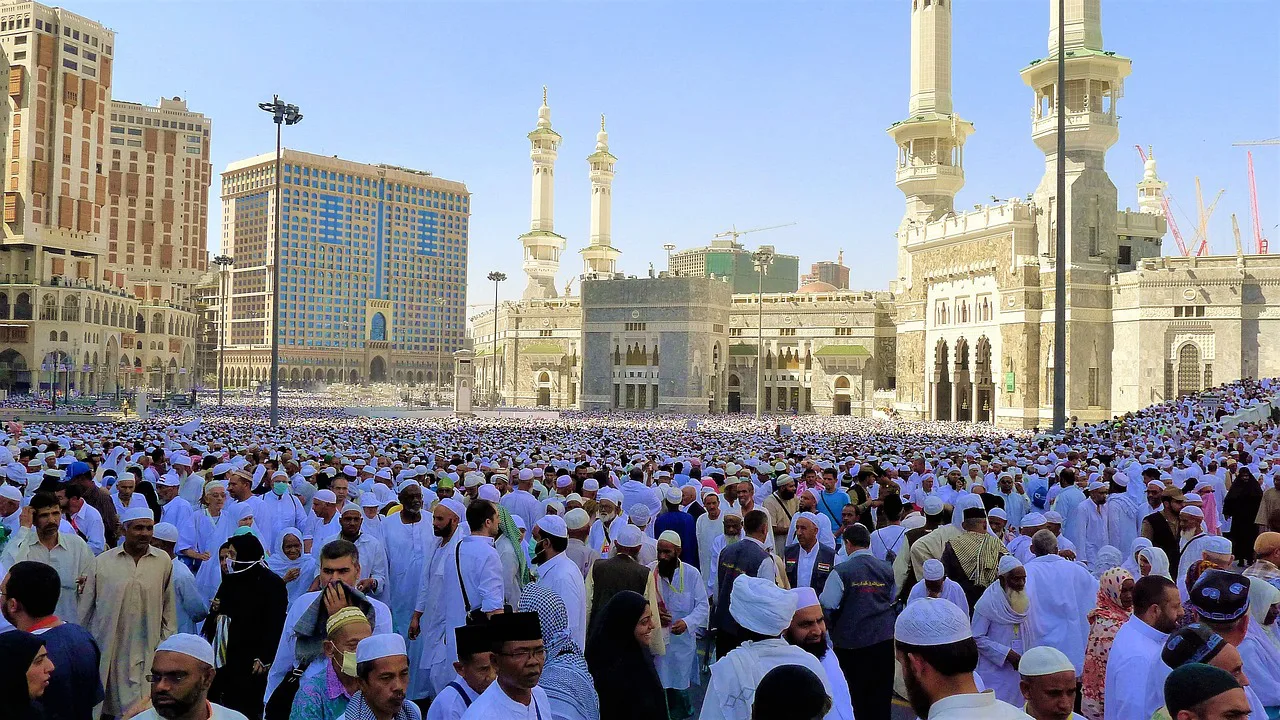
source by: pixabay
JEDDAH: Millions of pilgrims arrived to Makkah’s Grand Mosque on Sunday to perform Tawaf Al-Qudum (Tawaf of Arrival), kicking off the largest annual pilgrimage in several years.
It is the first tawaf (circumambulation of the Kaaba) that pilgrims perform after entering the sacred state of ihram (ritual consecration). This tawaf marks the pilgrims’ arrival at Makkah, Islam‘s spiritual heart and the focal point of the Hajj pilgrimage.
On Sunday night, pilgrims will begin their journey to Mina, a tent city about 5 km east of Makkah that is recognised as the world’s largest of its kind, ahead of the Hajj’s culmination at Mount Arafat, where the Prophet Muhammad is said to have delivered his last speech.
Pilgrims travel on the pilgrimage to Mina on the eighth of Dul Hajjah, known as the Day of Tarwiyah, and spend an entire day and night preparing emotionally and physically for the tremendous spiritual experience that awaits them at Mount Arafat.
As the ninth of Dul Hijjah approaches, the pilgrims meet at Mount Arafat, which is the highest point of the Hajj journey. In this holy place, they say duaa (prayers) asking Allah to forgive them and show them kindness.
During their time at Mount Arafat, the pilgrims also pray in the afternoon at the Namirah Mosque. This strengthens their relationship with Allah and gives them a chance to worship with millions of other travellers from all over the world.
Pilgrims leave for Muzdalifah in the evening of Dul Hajjah 9, which is an important place between Arafat and Mina. Pilgrims spend the night in Muzdalifah, where they also collect small stones that will be used in a rite to stone Satan at the Jamarat pillars in Mina.
After throwing the gathered stones at Jamarat Al-Aqaba, the pilgrims go to the Grand Mosque to do Tawaf Al-Ifadah. This rite can be done at any time between the 10th and 12th of Dul Hijjah.
After this holy act is done, visitors are no longer bound by the rules of ihram and are free to do anything that is allowed. But it’s important to remember that they have to go back to Mina to finish the other parts of Hajj.
Pilgrims must stay in Mina and do two more rami rites during the days of Tashreeq, which happen on Dul Hijjah 11, 12, and 13. On the 11th of Dul Hijjah, in the afternoon, travellers gather 21 stones and throw them at the three Jamarat. Jamarat Al-Ula is where the stoning starts, then Jamarat Al-Wusta, and finally Jamarat Al-Aqaba.
Also, before travellers leave Makkah, they have to do the Tawaf Al-Wida, which is also called the farewell Tawaf. This ritual is an important part of the Hajj journey, and all pilgrims must do it.
This year’s Hajj is expected to have the most people since 2019, before the COVID-19 pandemic started.
In 2019, about 2.5 million people took part in the Hajj, which is a very large number. But because of the worldwide outbreak, only 10,000 people were allowed to take part in the journey in 2020. In 2021, there were almost 59,000 people who took part.
The General Authority for Statistics says that in 2022, there were a total of 899,353 visitors, 779,919 of whom came from outside Saudi Arabia and 119,434 of whom came from within the Kingdom. This was still a big drop from the numbers before the pandemic.
The Ministry of Hajj and Umrah, on the other hand, has said that this year’s Hajj will have an incredible 2 million visitors, including 200,000 from the Kingdom. This noticeable rise in the number of participants shows that things are getting back to normal and that more people are able to go on Hajj again.
